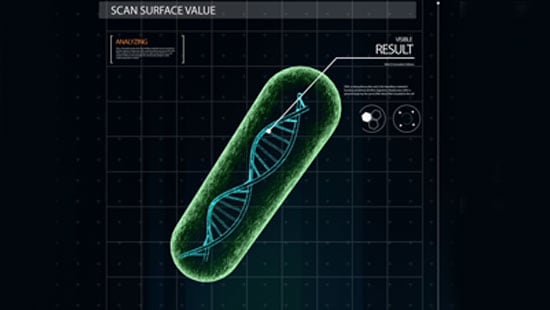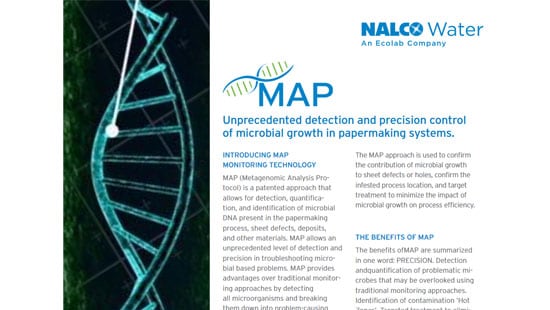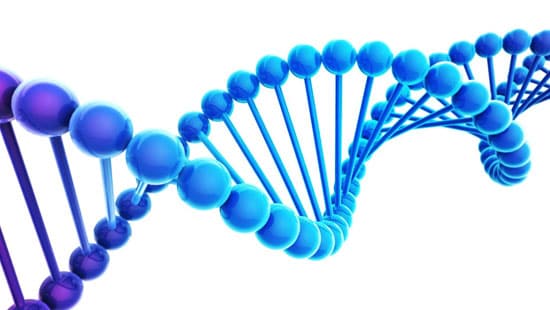
MAP Monitoring Technology
MAP monitoring (Metagenomic Analysis Protocol) is a patented approach that allows for detection, quantification, and identification of microbial DNA present in the papermaking process, sheet defects, deposits, and other materials. MAP monitoring allows an unprecedented level of detection and precision in troubleshooting microbial based problems and provides advantages over traditional monitoring approaches by detecting all microorganisms and breaking them down into problem-causing categories.
In keeping with Nalco Water’s tradition of delivering actionable data, MAP monitoring technology allows for quick and simplified analysis by grouping organisms into problem-based groups. This includes freshwater microorganisms, which are known to contribute to deposits, spoilage, and corrosion but difficult or impossible to enumerate with traditional techniques. Primary and Adaptive biofilm-formers can generate tremendous amounts of slime, making the process system more susceptible to fouling. Furthermore, bacteria protected in a biofilm are notoriously difficult to control. The MAP approach is used to confirm the contribution of microbial growth to sheet defects or holes, confirm the infested process location, and target treatment to minimize the impact of microbial growth on process efficiency
MAP monitoring can:
- Identify if a class of sheet defects are a result of poor microbial control or a chemical interaction.
- Identify which problematic bacteria are responsible for deposition/defects.
- Identify the source of inoculation, and where these organisms are growing uncontrolled in the process. Detection of problem bacteria is not limited by type of sample or organism viability.
MAP monitoring delivers:
- Increased runnability
- Increased production
- Cleaner system
- Reduced sheet defects
MAP Monitoring Technology
MAP monitoring is a patented approach that allows for detection, quantification, and identification of microbial DNA present in the papermaking process, sheet defects, deposits, and other materials.
Watch the video to learn more.

UNPRECEDENTED DETECTION
MAP identifies the source and type of problematic bacteria in paper process water giving the unprecedented ability to solve problems faster than ever before.

ADVANCED DIAGNOSTICS
Using qPCR and knowledge of the process, MAP provides precision and actionable information to get production back on track.


